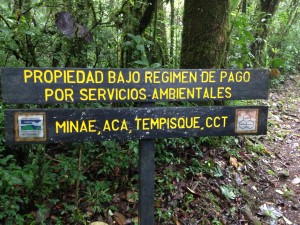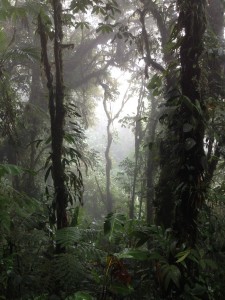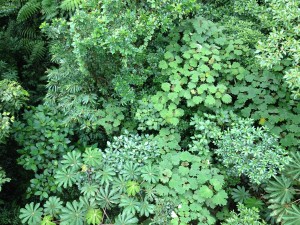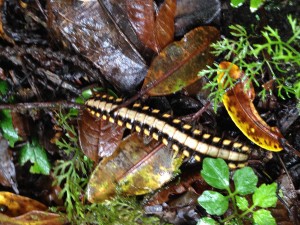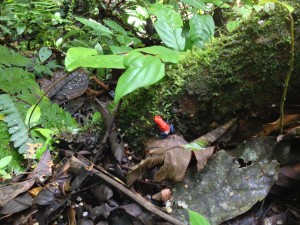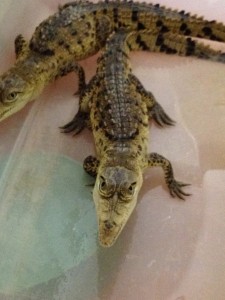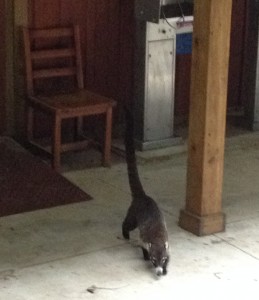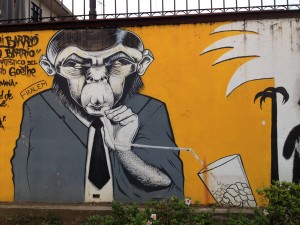Costa Rica: June 9-16, 2014
Time is relative. One year to a child is not the same as one year to a college student and one year to a college student is not the same as one year to a professor. The years start moving by faster and faster. This becomes all too obvious as you pass through the decades, but it becomes most obvious when you revisit a location that was so important to your life’s journey years later. It had been nine years since I was last in Costa Rica, and on that trip I was a new graduate student at Berkeley looking for a field site for my dissertation research. My first trip to Costa Rica was 14 years ago when I studied tropical ecology and conservation in Monteverde, a study abroad trip that ended up being the official start of my career as an ecologist.
I hadn’t been back to the biological field station in Monteverde since that summer course in 2000. As part of this trip, I finally made it back up the mountain. What an ideal site to contemplate the complexities of the tropical forest and how human activity is threatening its very existence. In this cloud forest, I first learned of the global amphibian declines. I first learned of the threats from pesticides. I first learned of the problems with our globalized food production system. And during a camping trip in Corcovado, I observed primates in their natural environment for the first time. I now knew what I wanted to devote my life to – the protection of the tropical forest and all its inhabitants.
That first trip took me from San Jose to Corcovado, then to Santa Rosa, and finally to Monteverde. On this trip, I landed in San Jose and immediately headed south to Las Cruces, one of three Organization for Tropical Studies’ (OTS) field stations in Costa Rica. Every visit to the tropical forest exposes new wonders. A lifetime is not enough to even begin to understand the complexities, interactions, and secrets of the world’s most diverse ecosystem. On this visit, I witnessed huge camouflaged moths, poison dart frogs, and ant-eating toads for the first time. I heard stories of jaguars, cave-dwelling crocodiles, the effectiveness of protecting private land bordering national parks for the conservation of biodiversity, and plans for extensive biological corridors from the Caribbean to the Pacific, all of which inspired hope for the world’s ecosystems. But I also heard stories of more amphibian declines, illegal hunting of top predators, use of hormones in tilapia farms that are likely altering the sex ratio of crocodiles downstream in a national park, and urban and tourist development that threaten those same ecosystems. The battle for conservation and sustainability is never over.
On this trip, after Las Cruces, it was off to Palo Verde, another OTS field station, then to Monteverde, and finally to the Soltis Center run by Texas A&M. A whirlwind of travel during our seven day stay. And a trail of carbon dioxide. This is the ecologist’s dilemma: do the benefits of improved understanding and appreciation of ecosystems and biodiversity from our travel, research, teaching, and service outweigh the costs of all the resource use needed to support those activities? We hope so. And I hope my students in this summer’s Environmental Science class at St. Edward’s University are inspired by this blog. If so, that will tilt the balance a bit more in the direction of benefits.
This ecologist’s dilemma is summed up well by Aldo Leopold, “All conservation of wilderness is self-defeating, for to cherish we must see and fondle, and when enough have seen and fondled, there is no wilderness left to cherish.”
Will this be the future of Monteverde as the road up the mountain is widened and paved, the future of Costa Rica as tourism continues to grow, the future of our world with 7.2 billion of us trying to meet our physical and psychological needs? What is left for wilderness? If a tree falls in a forest and no one is around to hear it, can we as a species be okay with that?
